Teething is often painful for a child. In rare cases, this period passes without pain, fever and whims.
The beginning of the process, signs
First of all, you should pay attention to the age of the child. It is generally accepted that the first teeth of a baby begin to erupt by 6 months, but sometimes this can begin at 4.
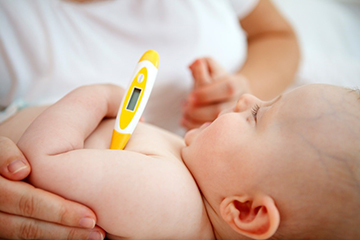
These signs indicate that the child's first teeth are being cut:
- increased salivation;
- loss of appetite;
- swollen bumps on the gums;
- redness of the gums;
- restless sleep;
- in some cases, temperature.
Important! First of all, you need to make sure that the anxiety or temperature in the child is not associated with some other reason - an infectious disease or a cold.
Show the child to the doctor and only after making sure that the reason for the poor health is the first teeth, you can try to alleviate the condition of the baby.
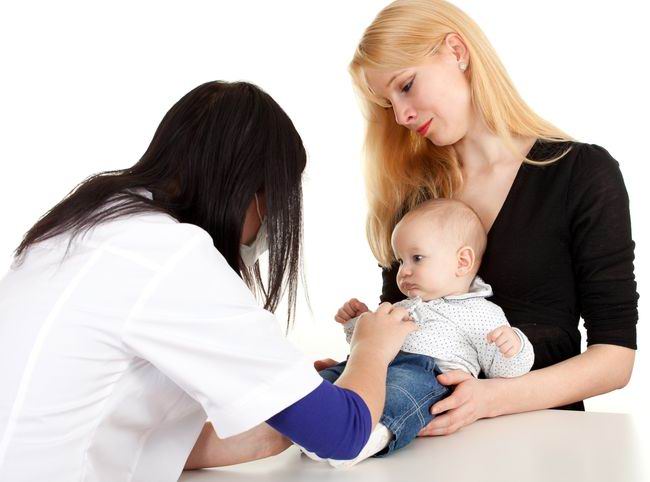
Possible problems
Teething is a natural process, so parents shouldn't worry too much. Increased salivation is soaked with a piece of clean gauze without wiping, so as not to irritate the delicate skin of the child. Saliva can also accumulate in the nasopharynx, resulting in a cough or runny nose with clear, watery discharge. Rinse the baby's nose with saline.

Important! It is not necessary to bring down a low temperature (up to 38 ° C). This is a natural reaction of the body to inflammation, and local swelling on the gums is exactly that.
If the child is coughing, the cough should be moist. A dry cough may be a sign of a cold or other infectious disease... The child pulls his own fingers, foreign objects, the edges of a blanket or pillow into his mouth. Do not stop him from doing this, just make sure that the things he reaches are clean, like the hands of the child.
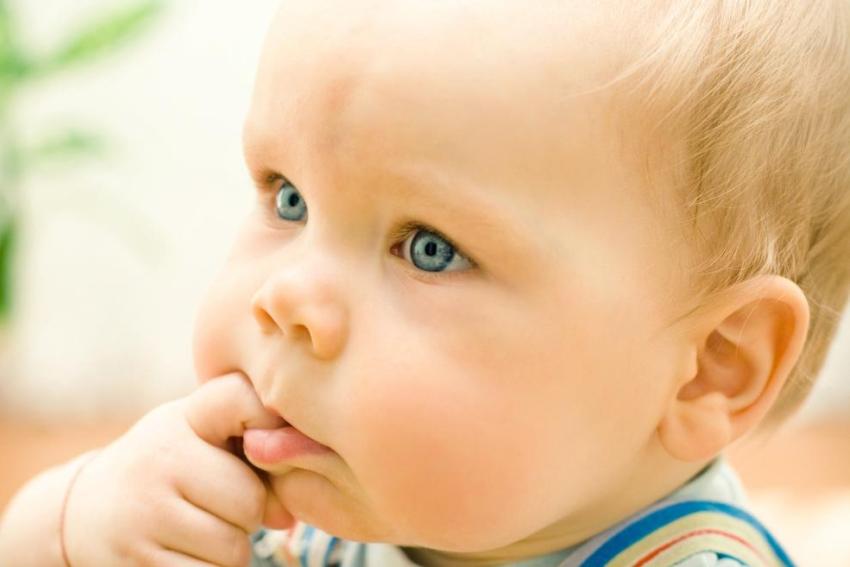
Teething nutrition
Decreased appetite can be caused by pain in the gum area, so do not force your child to eat. Food during this period should be cool, and the consistency of the food should be semi-liquid.
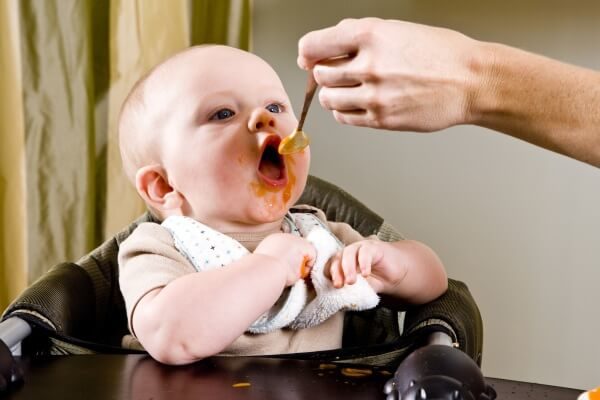
Usually, when teething, children do not refuse and eat with pleasure:
- milk porridge;
- yoghurts;
- kefir;
- liquid cottage cheese;
- cookies softened in kefir;
- vegetable purees.
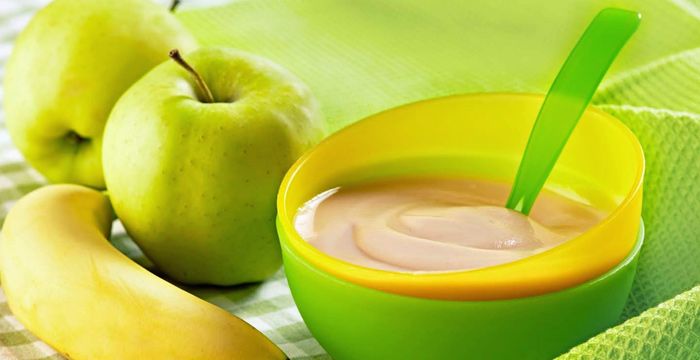
Mix cottage cheese in a blender with a banana or those fruits that the child loves. Does he eat well? Blend everything in a blender until semi-liquid. Is the child already eating by himself? Let him nibble on a rye bread crust, pieces of fruit, drying, carrot or bagel, after chilling them in the refrigerator. Cold relieves pain in the gums well, bringing relief to the child and relieving swelling, and the firm structure will massage the gums.
Remember! Pieces of food should not be too small so that the child cannot completely put them in his mouth.
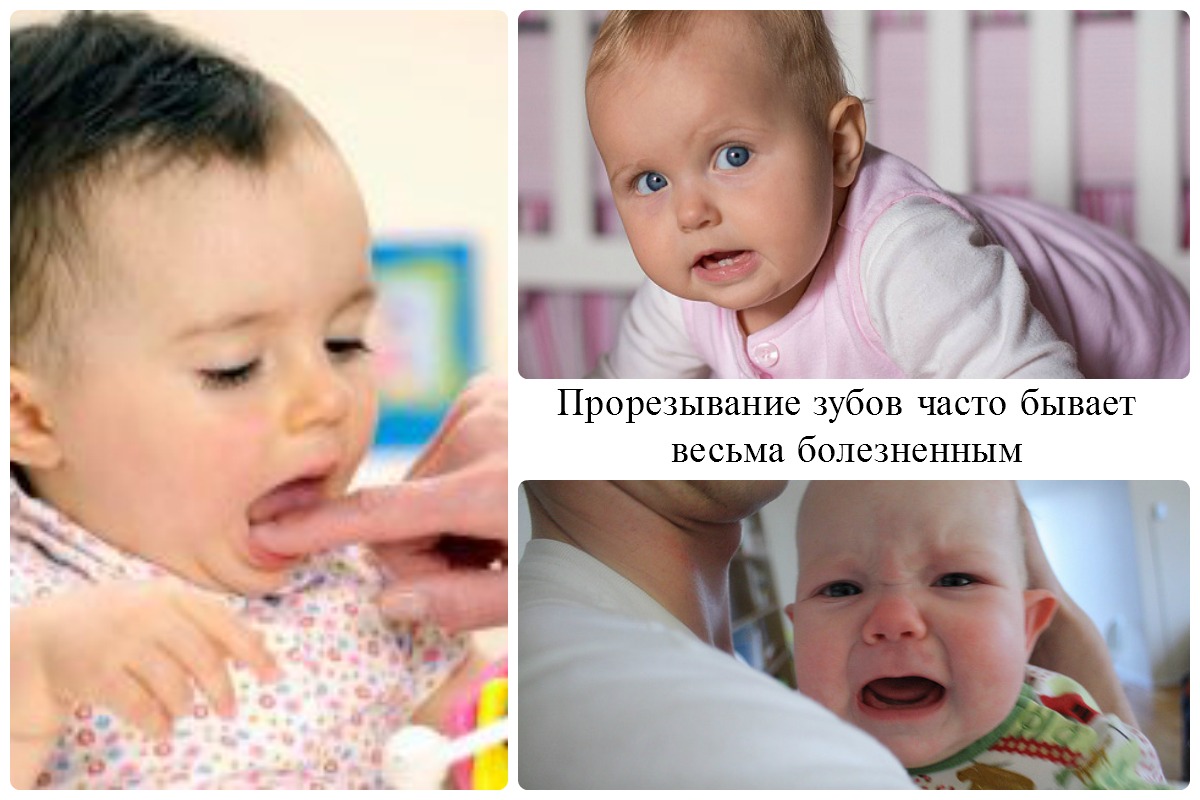
Anesthesia products
If the teething process goes on smoothly, accompanied by only a little pain, try to relieve it with special toys that are sold in pharmacies.
Teethers
These are silicone toys in the form of rings or other shapes. Sometimes they contain liquid inside. This is because these toys should be given chilled to the child. The water inside freezes, which keeps the toy cold for longer. Teethers massage the gums, relieve itching in places where a tooth tries to break through to the surface. They are made from ecological materials, as proof of which you have the right to demand a certificate of quality compliance from the pharmacy.

Massage
One of the parents can independently massage the gums of the child. To do this, just wrap a piece of clean cotton cloth, gauze or linen napkin on your finger and massage the gums by lightly pressing on them. This will help clear up excess saliva and clear plaque from your gums after a meal. Pharmacies also sell special silicone fingertips that are used as a massager.

Medicines, gels
If the pain worries the child too much, you should help him with special means. These are special gels, tablets and sprays that are sold in pharmacies and are prescribed on the advice of a doctor.

Gels for the smallest are the best solution, as they act locally, and therefore faster. They can be conditionally divided into:
- anesthetic;
- anti-inflammatory;
- homeopathic;
- combined.
Anesthetic gels
These gels induce mild local anesthesia, which reduces the sensitivity of the gums and hence the pain. They work instantly, but the effect is usually short-lived. This is offset by the ability to apply them several times a day.
Exception! Read the ingredients of the medicine. It is not recommended to use gels containing lidocaine. Allergic reactions most often occur to it and pediatricians consider it dangerous for the health of infants.
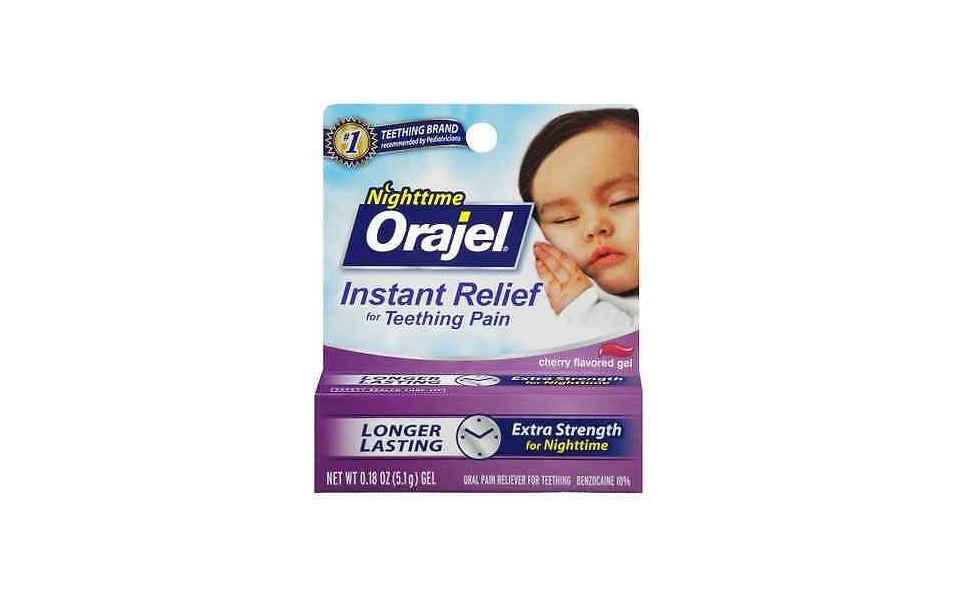
Anti-inflammatory gels
Their action is longer, up to 8-10 hours, but the effect is not as fast as that of anesthetics. The composition includes antiseptics that relieve inflammation and pain. The swelling diminishes and no longer presses on nearby tissues. They are also great in the case of a child's temperature.
Remember! Do not apply too much of the gel so that the child does not have to swallow it.
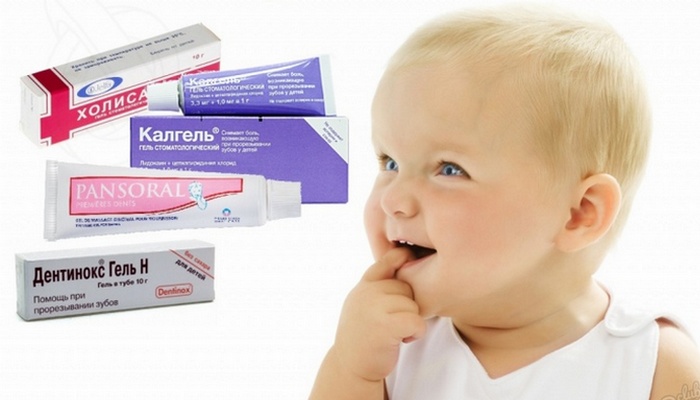
Homeopathic gels
Their composition includes extracts of medicinal plants, from which the likelihood of allergies is significantly reduced if there is no individual intolerance to one of the components. They are considered safe, but the effect begins to develop gradually, after several uses.
Important! The gels should not be used more than six times a day, after 3-4 hours, especially for children under 12 years of age.
Folk recipes also help well, products for which can be easily found at home or in the nearest pharmacy.
- Sage decoction - has a natural anesthetic effect, strengthens the gums.
- Clove oil is a pain reliever, mixed with vegetable or olive oil in a 1: 1 ratio and lubricated the baby's gums, applied to a sterile cloth.
- Chamomile decoction is an antiseptic with a sedative effect.
- Soda - grease the gums with a solution of soda: 1 tsp / l for 200 grams of warm boiled water.
- Valerian extract - diluted with water in a ratio of 1: 3 and lubricate the gums with it.
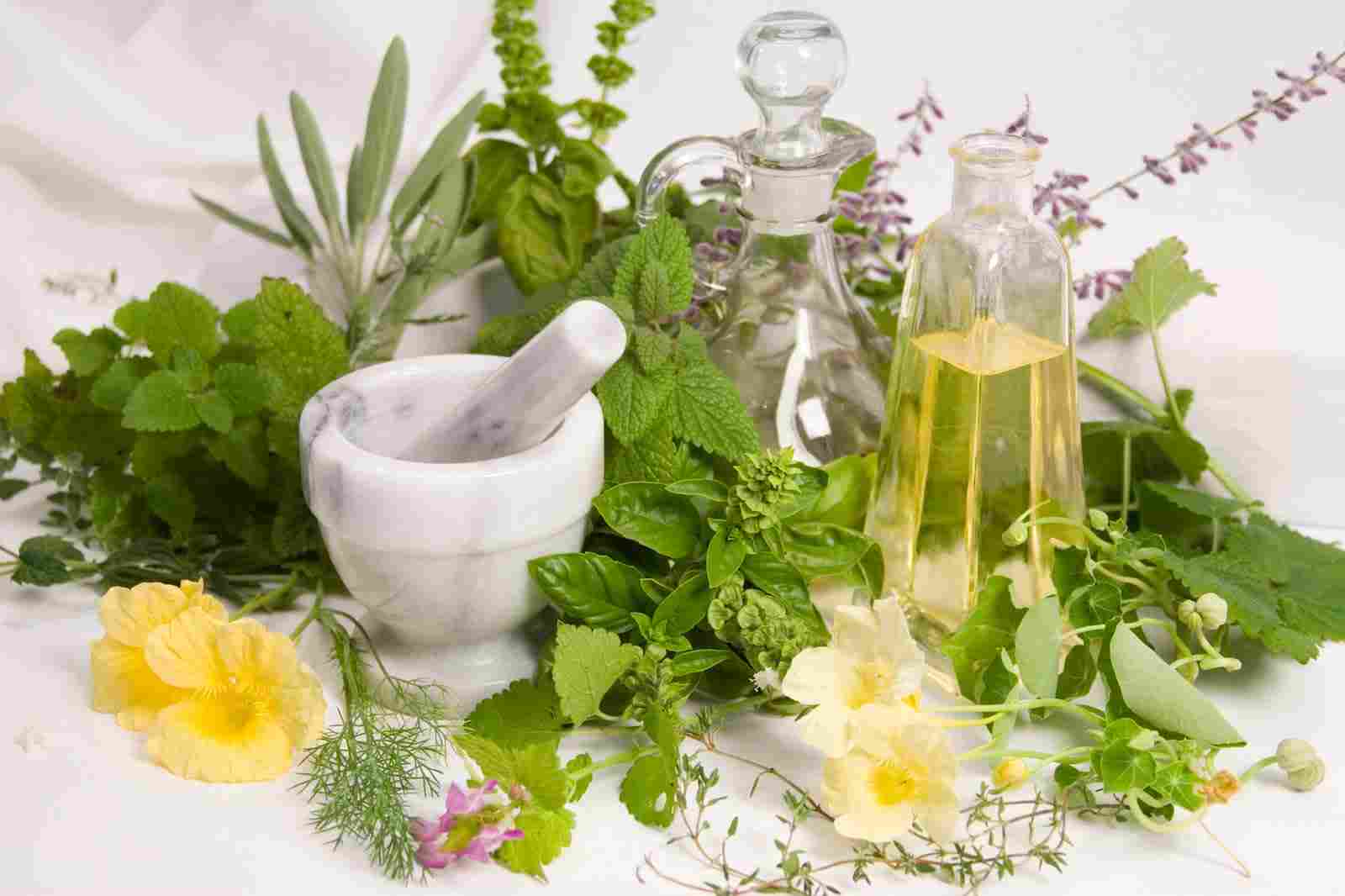
Table. A quick overview of the most popular teething pain relief gels in children.
| Name | pharmachologic effect | pros | Minuses |
|---|---|---|---|
| Kamistad Baby | Anesthetic | Approved from 3 months, does not contain lidocaine, acts quickly | Use no more than 3 times a day, the effect is short-lived |
| Dentol baby | Anesthetic | Approved from 4 months, does not contain lidocaine, acts quickly | Do not feed for 30 minutes after use, the effect is short-lived |
| Solcoseryl (paste) | Anesthetic | Regenerates wounds, effect up to 4 hours | Not recommended for children under 2 years of age |
| Holisal | Anti-inflammatory | Pain relieving effect lasts up to 8 hours, acts quickly, kills bacteria | Intolerance to salicylates, increases salivation; children after 1 year, if teeth grow |
| Baby Doctor | Homeopathic | Fast acting, contains extracts of medicinal plants | Not 100% natural, contains preservatives and thickeners |
| Dentinox | Combined | Pain relief, antiseptic, contains chamomile extract, for children after 4 months | Contains lidocaine hydrochloride |
| Calgel | Combined | Acts quickly; children after 5 months | Contains lidocaine |
| Kamistad | Anti-inflammatory | Used for teething molars, pain reliever | Children over 12 years old |
| Traumeel S | Homeopathic | Relieves swelling, relieves pain, natural | Contraindicated in children under 3 years of age |
Attention! If your child is good at freezing gels (containing anesthetics) but is allergic to lidocaine, you can try benzocaine gels. The effect of these substances is similar, but the chemical composition is different, so if you are intolerant to lidocaine, you should try drugs with benzocaine. Although the latter acts for a shorter time, it is better absorbed and penetrates to the painful focus.

For the health and growth rate of teeth, it is necessary to include calcium-rich foods and proteins in the child's diet. Many things affect the timing:
- heredity;
- the presence of rickets;
- avitaminosis;
- mother's nutrition during pregnancy, infectious diseases she suffered;
- endocrinological diseases.
Frequent mistakes
It happens that parents are looking for drugs that can accelerate the growth of teeth.
Remember! No gels or sprays can speed up the teething process. All of them are designed only to fight unpleasant symptoms and help the child to endure this difficult period in life.
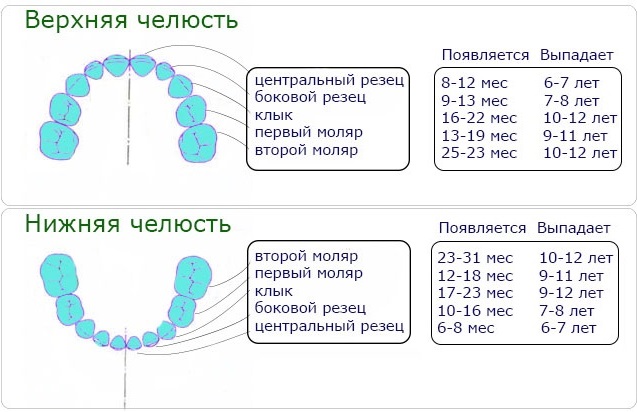
There is no need to be angry at the whims of the child during this period, because he is still very small and it is difficult for him to endure the pain and discomfort. Take the baby in your arms, play with him, distract him from the problem. With the right and caring approach, the teething period will not bring any particular problems to the child and his parents.

Despite the fact that parents expect their first teeth after the 4th month, it happens that they do not appear until a year. Do not sound the alarm, although an ordinary X-ray will help to calm you down. Pathology, when a child does not develop teeth at all, is very rare, so wait calmly and teeth will definitely appear.
Video - How to ease teething
Almost all parents invariably face the problem of teething in babies. Some children go through this period more or less calmly, but in most cases, teething is very uncomfortable. The child is capricious, does not sleep well and refuses food, driving his mothers and fathers to despair. In these cases, special gels come to the rescue, which facilitate the process of teething in babies. What drugs are best to buy and when should you start using them?
When to get teething gel v?
In children, milk teeth begin to cut in different ages, and for each it happens purely individually. On average, this happens between 5 and 9 months, and symptoms vary depending on the child's characteristics. But the general signs are as follows:
- the baby becomes moody and irritable;
- it is very difficult to calm him down, feed him and put him to bed;
- gums redden and swell, salivation increases;
- the child seeks to gnaw everything that falls into his hands;
- the temperature can stay at around 38 for several days;
- sometimes there is a cough, runny nose and even diarrhea.
All these symptoms indicate that the baby's teeth have begun to cut, so doctors recommend purchasing an anesthetic gel to relieve discomfort. Such remedies reduce pain, relieve inflammation and stabilize the child's condition.
Varieties of teething gels in babies
Do not rush to buy the first baby gel you see, because these drugs are classified into three main types. And the remedy should be purchased based on the symptoms: to relieve pain, reduce inflammation, etc. Let's consider all three types.
- Anti-inflammatory gels. Designed specifically to eliminate inflammation, but they do not guarantee long-term pain relief. The drug is used no more than 5-6 times a day and is an effective antiseptic for teething.
- Homeopathic gels. Universal remedies designed to facilitate the process of teething and relieve pain at the same time. The gels are made on the basis of extracts of medicinal plants and have an anti-inflammatory effect.
- Pain relieving gels. Preparations with a cooling effect, which are based on anesthetic components, mainly lidocaine. Such funds are guaranteed to relieve teething discomfort and have a beneficial effect on the baby's body.
General principles of use
Before using this or that drug, the first thing to do is to carefully read the instructions, paying special attention to age recommendations. Otherwise, the effect of using the gel will be short-lived. How to use the product?
- In no case should a large amount of the drug be applied to the child's gums, there is simply no need for this. It is enough to squeeze out quite a bit on your finger.
- The maximum use of the gel is no more than five times a day every four hours.
- Before using the medication, you should thoroughly wash your hands, since you need to apply the gel only with a clean finger, gently and easily rubbing the gel into the baby's gums.
- After applying the product for the next half hour, it is better not to feed or drink the baby.
- Do not use the drug every time the child starts to be capricious, the gel should be used only if the baby is severely discomfortable in order to avoid an overdose.
- At the first sign of an allergic reaction, the medication should be discontinued.
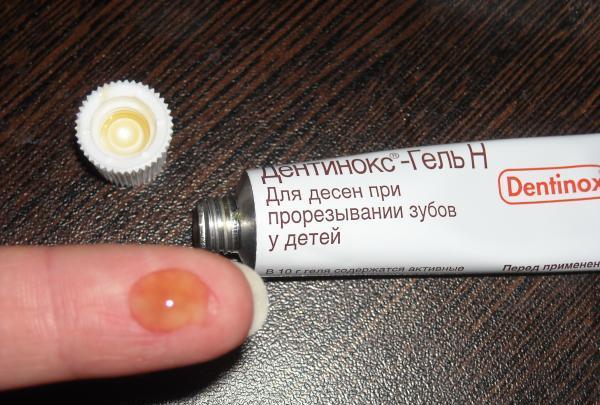
Teething pain relievers are medications that should only be used in extreme cases, when nothing is helping and the child is suffering. All parents must strictly follow the instructions and under no circumstances apply the gel at the first cry of the child. It is always important to remember that any drug is, first of all, a drug, the abuse of which is dangerous to the health of the baby. If you strictly adhere to simple recommendations, you can easily facilitate the baby's teething process and avoid unwanted consequences.
TOP 8 popular teething gels
Today pharmacies offer a wide range of various products, including children's gels. And it is sometimes very difficult to choose one. Our recommendations are based on the estimates of parents, we present you the most popular drugs and help you figure out which one is better to choose.
Teething gels in infants from 3-4 months
Kamistad. A complex product that contains medicinal chamomile. Has healing and antiseptic properties, quickly relieves inflammation and pain. The use of the gel is allowed already from three months of a child's life.
- Pros: after application, the effect of the drug lasts long enough.
- Cons: like the previous drug, it has similar contraindications.
Dentinox. One of the most sought-after teething gels that can be used as early as four months. Perfectly relieves pain and prevents inflammation, soothes and relieves the general condition of the baby.
- Pros: Contains a small amount of lidocaine and medicinal chamomile infusion.
- Cons: Cannot be used when breastfeeding and damage to the gums.
It is an ideal anti-inflammatory drug for teething, effectively relieving pain and swelling of the gums. It is well absorbed, acts for a long time and protects the child's oral cavity from germs and viruses. It has been used since three months.
- Pros: Can be used during lactation as the gel does not contain lidocaine.
- Cons: After application, you may feel a burning sensation, but it goes away quickly.

Baby Doctor. A homeopathic preparation based on herbal ingredients (chamomile, calendula and plantain), which can be used as early as three months of a child's life. Disinfects the oral cavity, relieves pain and strengthens the gums.
- Pros: no side effects and no allergic reactions.
- Cons: short-term action and individual intolerance to the medication.
Dentol baby. Safe effective remedy for teething based on benzocaine, which has a fairly fast analgesic and healing effect. The gel is allowed to be used already from the age of four months of the baby.
- Pros: democratic pricing and minimal toxicity.
- Cons: does not last long, the drug cannot be used more than four times a day.
Pansoral. It is considered one of the most effective means able to quickly remove pain syndrome when the first teeth erupt. The drug soothes the gums and has an antibacterial effect. You can use it already from four months.
- Pros: it contains only natural plant extracts and components.
- Cons: the effect of the action is short-lived, the gel relieves pain for a short time.
Teething gels in infants from 5 months
Calgel. Combined preparation with anesthetic and cooling effect based on lidocaine. Reduces pain and has an anti-inflammatory effect. It is used for children who have reached the age of five months.
- Pros: acts immediately after use, instantly relieves discomfort.
- Cons: has contraindications, can cause allergic reactions and hives.
Mundizal. An excellent anti-inflammatory drug approved for use for babies after six months. It is well absorbed into the mucous membrane of the gums, cools, relieves irritation and soothes the gums during teething.
- Pros: Pain relieving properties last a long time, long shelf life.
- Cons: not recommended for babies during breastfeeding.
The period of teething in some babies passes quite calmly, but more often it is accompanied by very alarming signs, and the pain that the baby feels is especially worrying for parents. Constant whims also appear, appetite decreases, gums turn red and swell. If signs of severe pain appear, you can give teething pain reliever- and these are not necessarily medications. There are various remedies for relieving symptoms.
In a child, when teething occurs, salivation increases. You should wipe your baby's chin with a soft cloth, otherwise a rash may appear on it. Before going to bed, anoint the reddened areas with a special gel, and if salivation increases, protect the skin from irritation with a cream. Many parents observe an increase in the child's temperature in anticipation of the appearance of the first teeth, indigestion is also observed, vomiting and diarrhea may occur.
When the first teeth begin to erupt, they cut through the gums, which becomes the cause of pain and irritation for the baby. Children are looking for toys to chew and often have their fingers in their mouths. As a teething pain reliever, you can give your baby a chilled rubber teether ring. Light finger massage of the gums can also temporarily soothe unpleasant manifestations.
Chilled water helps relieve pain and itching. During the period of increased salivation, the more if loose stools occur, so that the child drinks enough throughout the day, you need to be especially careful. Sometimes only the mother's hands help the baby to calm down - more often caress him during this period, show more care and love.
A good result for pain relief is given by gels such as Kamistad or Kalgel, as well as Pansoral. A small amount of this gel can be applied to the gums, up to 5-6 times a day. Usually, children experience severe discomfort only when the very first teeth erupt, and it lasts for several days. The rest of the teeth grow up to a year with less severe painful symptoms, and only after a year, when molars begin to grow, severe pains can return again.
Other teething remedies
Pharmacies now sell many remedies for teething... Among them, special teethers come out on top - rings that should be kept in the refrigerator and given to the baby to chew. Cold and massage at the same time help relieve pain, swelling, inflammation.
Chilled water, cool fruit or vegetable purees, massage of the gums with a finger or a soft silicone brush work well. Anesthetic gels - Kamistad, Kalgel, Dentinox, Holisal, Mundizal have a good effect. These drugs should be used during the onset of painful sensations, but not more often 3-4 times a day. If the baby is breastfeeding, it is better not to use such gels, because, when they get on the tongue, they make it difficult to suck at the breast.
If the temperature rises, you can use antipyretic drugs - Panadol, Nurofen. But before using them, you should consult your doctor.
Among folk remedies the safest is chamomile infusion. But its effectiveness is not very high, and such an infusion helps only with minor pain sensations. It is necessary to pour a teaspoon of chamomile with a glass of boiling water, insist for half an hour and lubricate the baby's gums with strained infusion. Chamomile is a good remedy for teething, it has a mild analgesic, soothing, anti-inflammatory effect.
There are different ways and means to help your baby cope with pain and other discomfort during teething. You decide which of these tools to choose. In any case, during this period, the child needs increased attention, a constant feeling of maternal love, affection, warmth. Take him in your arms more often, distract, calm him down, pay maximum attention. You can read here. It is interesting.
The time when a child's teeth begin to grow is one of the most difficult for both the baby and the parents.
The first incisors usually appear on the lower jaw at about 6-7 months.
However, in some children, they can break through at 4 or even 3 months of age.
Or, on the contrary, it happens that they begin to grow much later than the average. In any case, the process of the appearance of teeth is a rather painful test for a child. In order for the baby to pass this period easier, doctors most often advise using gum gel when teething.
At this stage, the baby has a hard time, since his body suffers considerable stress, as a result of which the crumbs' immunity falls. As a result, the child is lethargic, capricious, often asks for his arms and cries a lot. At night, the infant may sleep poorly and refuse to stay in its crib.
It is important for parents to treat the baby's condition with understanding and take care so that the child can calm down and relax.
Profuse salivation is often a precursor to the first teeth. The reason for its appearance is irritation of the gums, which become very sensitive during this period.
Sometimes there is so much saliva that the baby's clothes get wet in a couple of minutes.
Due to the fact that the chin of the baby is constantly wet, his skin is often inflamed and covered with a rash.
The baby's gums swell and turn red. This period can be long. When, finally, the tip of the tooth pierces the gum, it often becomes inflamed and swollen.
Now you need to make sure that food particles do not remain in the oral cavity and do not contribute to the multiplication of microbes. To do this, the baby should drink liquid more often, and it is also recommended to massage the gums.
In turn, a large amount of drinking water dilutes the stool, and the child may experience diarrhea and vomiting. However, an infection can also be the cause of an upset stomach, since the baby at this time often gnaws at various objects that come across his arm. For the same reason, stomatitis often occurs.
It happens that the baby refuses to eat. Although sometimes it happens the other way around - he sucks heavily on the breast to relieve itching and soreness.
 During the growth of the teeth, pain is the most painful for the child. When a tooth pierces the gum, the body temperature sometimes rises to 37.5-38 degrees.
During the growth of the teeth, pain is the most painful for the child. When a tooth pierces the gum, the body temperature sometimes rises to 37.5-38 degrees.
A minor runny nose that arose at this time is most often the result of a large amount of salivation.
But it should be remembered that against the background of a fallen immunity, a child can easily get sick.
If his throat reddens, a cough and a runny nose appear, and the baby has difficulty breathing, then an urgent need to call a doctor.
To make it easier for the child to survive the painful period of the appearance of the first teeth, you need to periodically massage the gums, and also give the baby special teether toys to chew.
At high temperature antipyretic drugs are used. For local anesthesia, it is recommended to apply special dental gels to the gums.
How does the gel help when teething?
 Teething gums for babies are designed to relieve the baby's pain when his first teeth grow and to relieve gum inflammation.
Teething gums for babies are designed to relieve the baby's pain when his first teeth grow and to relieve gum inflammation.
In some drugs, there is an anesthetic component in the composition, which acts only at the site of application and does not enter the bloodstream.
Such drugs quickly block pain, but they do not last long.
There is a group of gels based on anti-inflammatory components. They are aimed at removing the cause of gum irritation, but their effect is not noticeable as quickly as with anesthetics. Depending on the main component, children's gels are cooling (analgesic), anti-inflammatory and homeopathic.
Which gel is better to choose?
Each drug has its own contraindications, so they must be taken into account when buying a gel.
Lidocaine-based gels are among the most popular drugs that relieve pain quickly.
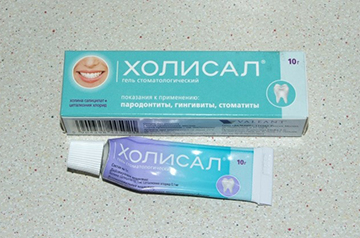 For example, Kamistad Baby and Dentinox, in addition to the anesthetic, also contain chamomile tincture, which has a mild anti-inflammatory effect.
For example, Kamistad Baby and Dentinox, in addition to the anesthetic, also contain chamomile tincture, which has a mild anti-inflammatory effect.
Gels can be used from 3 months of age, however, like most drugs with lidocaine, it is recommended to use children under 12 only under the supervision of a doctor. "Dentinox" is contraindicated in patients with hypersensitivity to fructose, and can also cause itching and skin rashes.
Kalgel effectively relieves pain. In addition to lidocaine, the drug contains an antimicrobial component (cetylpyridinium chloride). However, the product should not be applied frequently (up to 6 times a day) and should not be used by children under 5 months of age. In addition, Kalgel has a number of contraindications, which must be carefully read in the instructions before buying.
Gel with analgesic effect, antimicrobial and antifungal properties "Cholisal" not only relieves pain, but also works to eliminate inflammation. The main components of the drug are choline salicylate and cetalkonium chloride. Eliminates gum swelling and pain relief for 3-8 hours. Contraindicated in patients with hypersensitivity to salicylates.
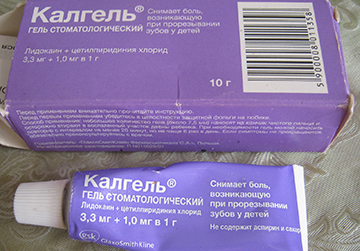
If the child does not tolerate drugs with lidocaine, then you can try "Baby Doctor" First Teeth. The gel consists of plant components: calendula, chamomile, echinacea, marshmallow root, plantain.
Quickly neutralizes pain, effectively relieves irritation, suitable for the smallest, if they are not allergic to the ingredients of the drug.
In cases where it is necessary to quickly relieve severe pain (for example, when it prevents the baby from falling asleep), it is better to use funds with an anesthetic. When the discomfort is insignificant, but an inflammatory process is observed, drugs that relieve irritation can be used. If the child is very sensitive to the synthetic components of the gels, then you should stock up on homeopathic ointments.
When teething wisdom teeth, severe pain syndrome can be observed. In this topic, everything about measures to eliminate pain syndrome.
Are there any allergic reactions?
Before using dental gels, you should make sure that your child really needs them. For this, it is necessary to exclude colds and infectious diseases.
Preparations with a strong analgesic effect are recommended to be used with caution, always under the supervision of a doctor. It is important to adhere to the dosage prescribed in the instructions. Exceeding the permissible norm for a child (especially a baby) is fraught with rashes, vomiting and even a spasm of the airways.
Therefore, anesthetic gels should be used only in cases where it is necessary to relieve severe pain, which is difficult for herbal preparations to cope with. In addition, any drug should be studied for contraindications, and also take into account the baby's allergic tendencies.
The smallest likelihood of contraindications for homeopathic remedies, however, and the effect of these funds does not appear immediately. When buying such gels, you need to consider these nuances.
The baby's first teeth are both joy and tears. The joy that the child is growing up and will soon be able to eat adult food, and tears from the fact that this period is very difficult for parents and children. Poor crumbs suffer from fever, snot and pain attacks, and this is not all that lies in wait for the baby with each new tooth. How can you help your child get through this difficult period, how to relieve pain and make the nights calmer? How to anoint sore gums and relieve swelling? What will help relieve the painful symptoms? We will offer you an overview of popular products that are in demand among parents of babies in their first year of life. The task of such drugs is to eliminate the unpleasant sensations that torment the crumbs during the period when teeth are being cut.
It is possible to alleviate the baby's condition not only with the help of special teethers, but also using anesthetic gels and ointments.All medicinal products can be divided into 3 main groups:
- topical use - teething gel, ointment or cream;
- drops that relieve inflammation and painful symptoms;
- homeopathic medicines.
The principle of action of drugs
The main active ingredients in topical gels and ointments are various kinds of pain relievers - anesthetics, such as lidocaine. They block pain points located on the gums. As a supplement to them, substances that relieve inflammation and herbal ingredients can be added, which take on the responsibility of soothing disturbed gums.
The effect of most local anesthetic drugs is immediate, but unfortunately short-lived. Pain relief works for about 30 minutes. If you wish, you can choose a medicine with a longer duration of action.
When should anti-inflammatory and anesthetic medications be given? You can resort to such drugs when you see a child's fever or notice pain sensations that cause discomfort to the baby.
Drops are given to newborn babies by mouth, the most noticeable effect will be observed 40 minutes after their use. The duration of the positive reaction is quite long - up to 12 hours. It is often not recommended to give these drugs to children. Their reception must be due to serious reasons and pronounced symptoms.
Homeopathic remedies are 100% herbal ingredients. These natural ingredients have a beneficial effect on the entire child's body. After taking them, the elimination of toothache, the removal of inflammation and the acceleration of the process of teething are noticed.
Each group requires separate consideration. Let us dwell in detail on the most effective drugs, indicating their positive aspects. If young mothers still have a test in the form of teething in a child, it makes sense to find out in advance the main points and ways of helping.
Local anesthetic gels
The group of drugs includes a number of pain relievers, most often used during the period when children are actively teething. Applied to the affected area, they relieve unpleasant symptoms. It is impossible to identify a universal remedy suitable for everyone and everyone, since the perception of components by the organisms of different children may differ.
Kamistad Baby - from 3 months
Kamistad Baby is a baby gel used in dental practice. Its composition is varied and provides several positive effects at once: local anesthesia, relieving inflammation, antibacterial treatment and protection. Lidocaine, which is part, under the "guidance" of soft chamomile, penetrates into the painful focus and relieves painful sensations during teething.
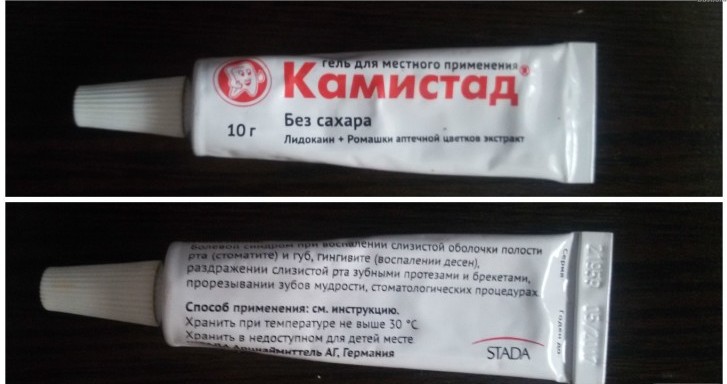
Dentinox gel - from 4 months
Gel Dentinox will help the child get rid of painful attacks for a while. The anesthetic here is lidocaine. As anti-inflammatory agents, it contains polidocanol and chamomile infusion, which help to reduce the growth of harmful bacteria.
By anointing the inflamed area, you will ease the suffering of the baby for a short time - only 15-30 minutes. Apply the drug little child can be done several times a day. The absence of sugar in the composition makes Dentinox gel safe for teeth.
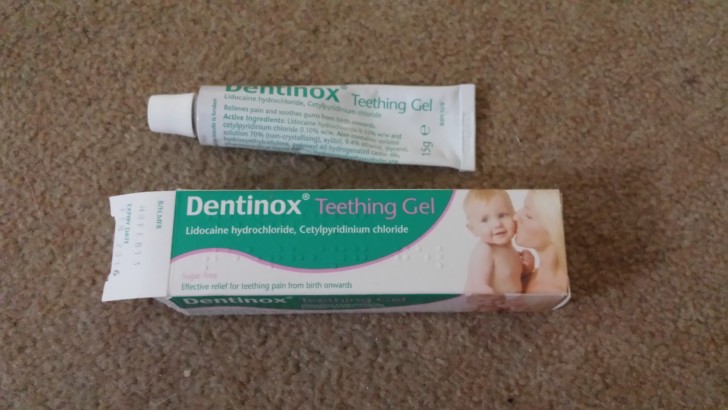
Calgel - from 5 months
Calgel is a local drug based on lidocaine, which works as an anesthetic, and cetylperidine, which has an antiseptic effect on many bacteria and fungi. The drug begins to take effect within a couple of minutes after being applied to the gums.
Its effect is also fleeting - the gel will help the child for no more than 15-30 minutes. Secondary application is possible, but you should not abuse it - you can smear the gums up to 6 times a day. Kalgel is popular not only for its analgesic effect during teething - it is loved by parents for its quick help with thrush in the mouth.

Cholisal gel - from 12 months
Several active components act in the Cholisal gel: cetalkonium chloride and salicylate choline. The dental gel will help kill harmful bacteria, block pain symptoms, and relieve swelling.
Teething sore gums will immediately feel relieved after applying this gel. It has a unique structure that magically adheres to the mucous surface of the baby's mouth and helps to relieve the baby from pain for a longer time. Its action lasts about 3 hours.
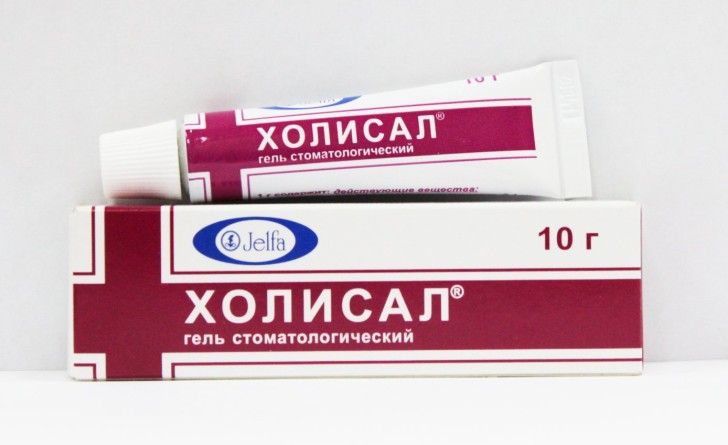
Antihistamines in the form of drops
Oral drops are antihistamines, i.e. antiallergic agents that are able to relieve swelling of the mucous membranes and thus reduce discomfort.
Fenistil
Drops Fenistil will help eliminate swelling in the mouth and nose of the child in the first months of life, which will undoubtedly alleviate the condition of the baby, because now he will breathe much more freely. The drug can be used up to 3 times a day.

Parlazin
The antiallergic drug Parlazin will also help relieve the unpleasant consequences of teething in children. The medicine is provided in drops. The drug can be used only once a day, but its effect is very long. By adopting this remedy a baby suffering from teething will feel less swelling in the mouth and will be able to breathe calmly.
It is very convenient to use drops, since the child does not even have time to notice and feel that he is being treated with something. It is enough for mom to quickly drip the required amount of liquid from the dispenser or give it with a drink. Children are sometimes afraid of gels.
Homeopathic remedies
Homeopathic remedies designed to solve the problem of tooth inflammation and pain relief are entirely composed of natural ingredients.
A striking example of a homeopathic medicine is Traumeel C ointment. The completely herbal basis of the drug relieves inflammation and pain, and also eliminates puffiness. The maximum effect is achieved by applying the product to the entire surface of the mucous membrane of the child's mouth. You need to perform this procedure 3 times a day.

Dentinorm Baby
Dentinorm Baby is a homeopathic remedy that is also very popular among parents. It is sold in the form of drops for oral administration. Manufacturer - Boiron (France). The combined action of the drops is achieved due to the multicomponent composition. Thanks to the action of the components, all the unpleasant sensations accompanying the eruption of milk teeth are removed. Convenient single dose containers eliminate the risk of overdose. You can take the remedy up to 3 times a day. The average course of treatment is 3 days.
It is recommended that you consult with your lead pediatrician before starting each drug. Side effects and contraindications for use also take place, which should not be forgotten. Remember - it is important not only to help the child, but also not to harm him, so you should always be extremely careful about the choice of medications.
